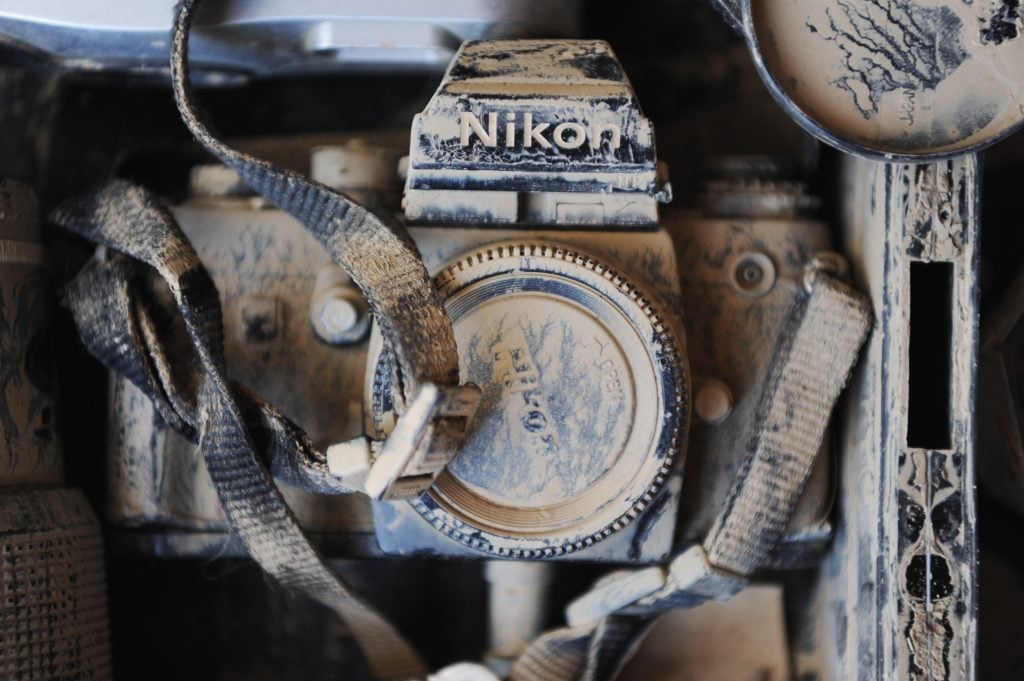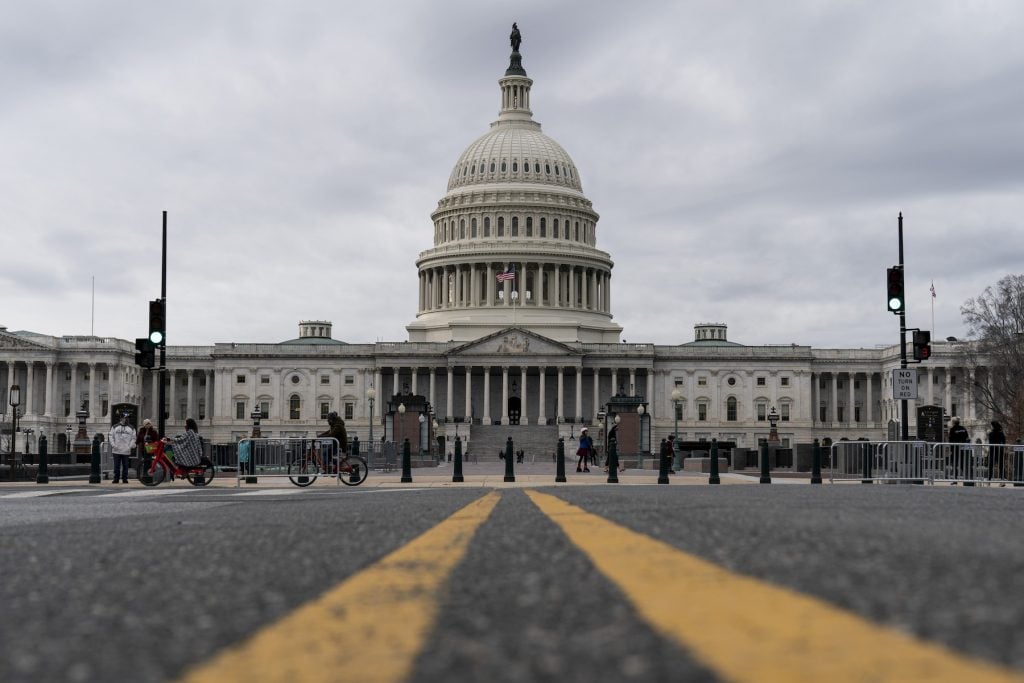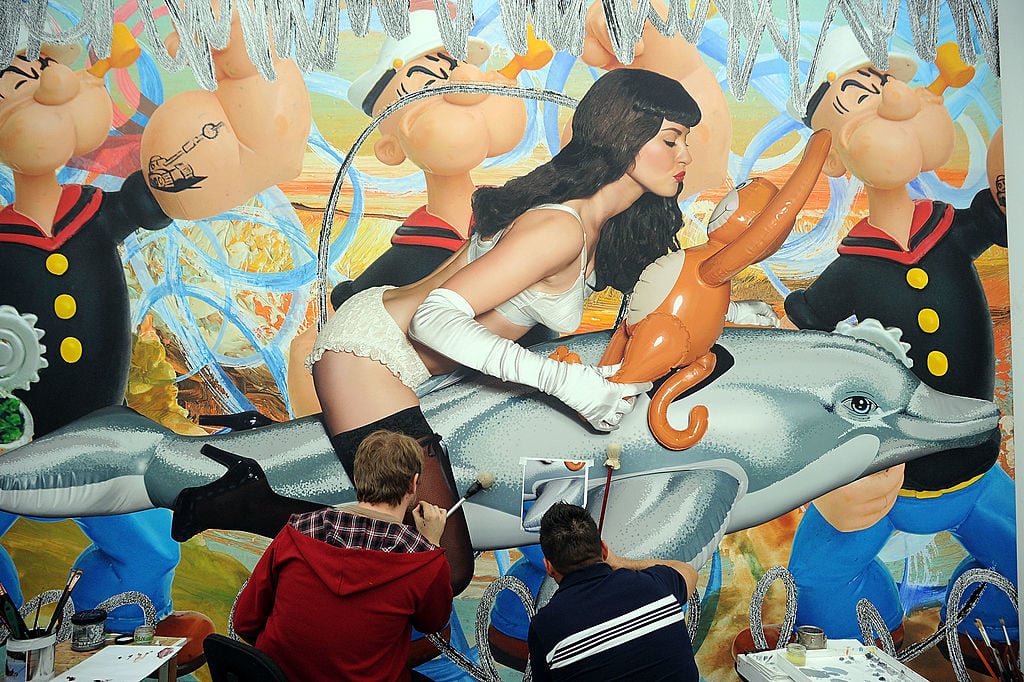Have you ever wondered what your rights are as an artist? There’s no clear-cut textbook to consult—but we’re here to help. Katarina Feder, a vice president at Artists Rights Society, is answering questions of all sorts about what kind of control artists have—and don’t have—over their work.
Do you have a query of your own? Email [email protected] and it may get answered in an upcoming article.
I’m writing on behalf of a friend who works with the studio of a major sculptor. My friend feels that, as an artist himself, he should receive at least partial credit for the sculpture he worked on. The attribution doesn’t need to be dramatic, maybe something like in a rap song, e.g. “by famous artist (f. my friend and his coworkers).” Do you think he has a right to such a credit? How would you go about asking for it?
This is a time-honored question that far predates the studio practices of any contemporary artist. You may have noticed that over the past few years, an increasing number of Renaissance works at the Metropolitan Museum of Art—such as those by Verrocchio, Veronese, and many others—no longer merely list the artist’s name, but instead elaborate “Workshop of Andrea del Verrocchio” or “School of Paolo Veronese.” Such changes are reflective of shifting perspectives on authorship and accreditation.
Jumping forward just a tad, your friend’s dilemma has parallels with a court case that’s currently underway in Paris, involving Maurizio Cattelan and Daniel Druet, a French sculptor of some renown who has been making the wax statues featured in Cattelan’s work since the end of the 1990s. Druet’s lawsuit is more complicated than your friend’s situation, because Druet claims to have asked for credit from the beginning of his working relationship with Cattelan—and therefore doesn’t only want a featured credit for a drop-in verse. The ensuing court case will determine if Druet shall be named the “exclusive author” of nine works that are currently credited to Cattelan, and be compensated appropriately. Get your popcorn: It’s a case poised to fundamentally redefine the parameters of authorship in contemporary art!
From Giotto to Michelangelo, from Donald Judd to Jeff Koons, artists have long required the assistance of numerous employees and apprentices in their workshops, or outsourced production to specialized factories—processes which unavoidably create a distance between the revered hands of the artist and their artwork. The viewing public may not realize this, even if Warhol’s studio was literally called the Factory. Consider Takashi Murakami’s studio, Kaikai Kiki Company Ltd., at which 60 employees clock in daily with computerized timecards and attend to the whole artistic process, from conceptualization to design and production.
Though an artist in his own right, in this instance your friend was acting like one of Murakami’s employees. He was hired for the completion of a specific task, for which the outcome was known at the start. This means that your friend was not a collaborator or fellow artist, but merely one of the many people that it takes to create one of the more famous artist’s works. I understand the desire to be credited, especially if your friend feels they endowed the work with an irreproducible quality or effect. But as with so much contemporary art, it isn’t so much the hands-on making as the ideating that counts.
I would argue—though not in court, as I’m not a lawyer—that the distinction between making and ideating is much harder to delineate in Murakami’s studio than in your friend’s situation. Theirs is the artisan model, not different from those Renaissance works I referenced earlier, whereby an artist might have done something himself but was too busy. So an apprentice may have completed the background, angels, and ancillary saints in a painting of the baptism of Christ, for example, but Verrocchio would have stepped back in to paint Christ’s face himself.
Duchamp probably didn’t know much about porcelain, and that was the point. In the absence of any better system, in art, authorship lies with the ideator.

A pile of new books on a bookshop sales counter in the Bornheim district. (Photo by Frank Rumpenhorst/picture alliance via Getty Images)
I just published an academic book with a university press and cleared copyright for all of the images of artwork that were included. Of course, I also cited all the quotes I used in accordance with the Chicago Manual of Style. After publication, I received an email from the estate of a writer quoted at length in my book, asking if I cleared the copyright of the quotes that I used. Eek! Should I be worried?
According to the fair use doctrine of the U.S. copyright statute, it is permissible to use “limited portions” of a work for the purposes of criticism, comment, scholarship, and research. What is a “limited portion,” you may ask? Well, it is completely circumstantial, and therefore hard to discern.
Much as is the case with fine art, the author of a creative work is the de facto copyright holder (unless of course, the author has signed the copyright over to the publisher, which we will assume here that he or she has not). When I first read your question, I recalled a major case that saw the publishers of Gerald Ford’s memoirs sue The Nation magazine in 1980 for publishing 300 words of the 200,000-word manuscript before the book had been published. Even though the article only previewed approximately .0015% of Ford’s work, the Supreme Court found that the quoted material did not fall under fair use because it revealed the “heart of the book,” “the most interesting and moving parts of the entire manuscript.”
The courts concluded that the pre-publication of the material—the juicy stuff that addressed Richard Nixon’s pardon—would cut into the value of the sales of the book. Why, after all, buy the cow if you can get the milk for free (an aphorism that is, incidentally, generic enough to fall under fair use)?
Of course, without knowing how many words your paper is and how many words you quoted it is impossible for me to say with certainty that it falls under fair use. This said, as the work you are quoting has already been published, it would be extremely hard for anyone to argue that you were undermining the market for the original in the same way that The Nation did for Ford’s memoir.
If I had to guess, I would assume that the writer’s estate is simply being protective of his or her work and just wanted a heads-up. Perhaps you can send them a copy with a nice note attached. The gesture may go a long way.

An old Nikon camera belonging to photographer Daniele Dainelli. (Photo by Laura Lezza/Getty Images)
My father was a photographer of some prominence. His work was mostly artistic, but I recently came across a cache of negatives related to work he did for Chevrolet and GM in the 1950s. There are a number of outtakes from images that were used in ads, and we’re trying to determine whether we own the copyright on those images. Someone I spoke with implied that anything used in a magazine ad was public domain. Could you please offer me some insight here?
That’s a creative—and puzzlingly specific—take on public domain, which is a rather large and important concept in the copyright business as it refers to works that exist outside copyright. While magazines are often in public, when on newsstands, and delivered to domains, i.e. homes, this interpretation is incorrect. Advertisements are creative works that are entitled to intellectual property protection.
This wasn’t always the case. In 1891, the U.S. Supreme Court ruled in Higgins v. Keuffel that the copy on the label for a bottle of ink was not protected by intellectual property rights as it had “no possible influence upon science or useful arts.” By the Mad Men era, it was hard to argue that the agencies that produced advertisements had no such influence, and slogans like “The Fate Of A Fabric Hangs By A Thread”—a real example of a 1952 tagline for Enka Rayon—were deemed suitable for trademarking. And since trademarks, unlike patents and copyrights, never expire, to this day, rayon would still have a trademark on their iconic slogan if they had continued to use the trademark in their campaigns (unfortunately both the trademark and the company are no longer).
In addition to trademark protection, advertisements are also subject to copyright protection. In the 2000 US Presidential election, Ralph Nader successfully defended himself from a copyright-infringement lawsuit by MasterCard over an advertisement for his presidential campaign that parodied their famous “Priceless” series, since it was for “a political, non-commercial purpose.”‘ (All these examples come from a lovely article in the Michigan Telecommunications and Technology Law Review.)
Copyright usually rests with the firm that created the ad rather than the company advertising the product, unless the person who made the ad was a freelancer, in which case she might own the copyright. I doubt that situation applies to your father, though. He wasn’t the lead creative on the ad, he only contributed to it.
Without more knowledge about your father’s arrangement with the automobile companies, or the firm that created the ads, I can only guess about the degree to which you own the photos, but I am not optimistic and would advise caution here. Your father most likely signed away the rights lock, stock, and barrel—outtakes included. For better or worse, I don’t know many advertising companies that work any other way.

Clouds pass over the Capitol Dome on December 31, 2020 in Washington, D.C. (Photo by Joshua Roberts/Getty Images)
I switched from watching the Bob Ross channel to CNN the other day and saw some guy named Josh Hawley ranting about a bill that would change the term of copyright. WTF—can he do that?
The rambunctious junior senator from Missouri could introduce a bill that would do that, and on May 10, he did.
Hawley has unveiled a bill to amend the Copyright Term Extension Act of 1998, which I’ve discussed before. In 1998, after lobbying from the Walt Disney Company, Congress passed a law that extended copyright protection for corporations from 70 years to 120 years after creation, or 95 years after initial publication.
The Copyright Term Extension Act (also known as the Sonny Bono Act for the musician turned congressman who died nine months prior to its passage) didn’t just serve corporate interests. It helped artists, too. With the passage of the act, the term of copyright was extended to the life of the creator plus 70 years. It also increased the copyright protection for works published before 1978 by 20 years, to a total of 95 years from their publication date (a funky exception to the 70-years-postmortem rule that never fails to confuse).
Hawley’s proposed Copyright Clause Restoration Act would limit copyright protection to 56 years—28 years of automatic protection, plus a potential for an additional 28-year renewal. The act would presumably shorten the lifespan of copyright for individual creators as well as for corporations.
So what should we do?! Honestly, I wouldn’t worry too much about this one. The proposed bill seems more like a ploy for publicity than a serious piece of legislation. Hawley clearly has it out for Mickey and friends; in the introduction to the bill he cited Disney as a ‘woke’ corporation no less than eight times.
It is unfortunate that Hawley did not achieve any nuance by addressing the term of individual authorship—as it reads, one would think that every creator has the resources of Disney—but this just signals that the entire concept is half-baked. So to turn back to your question: sure, he can do that, but for the time being he won’t get very far.











